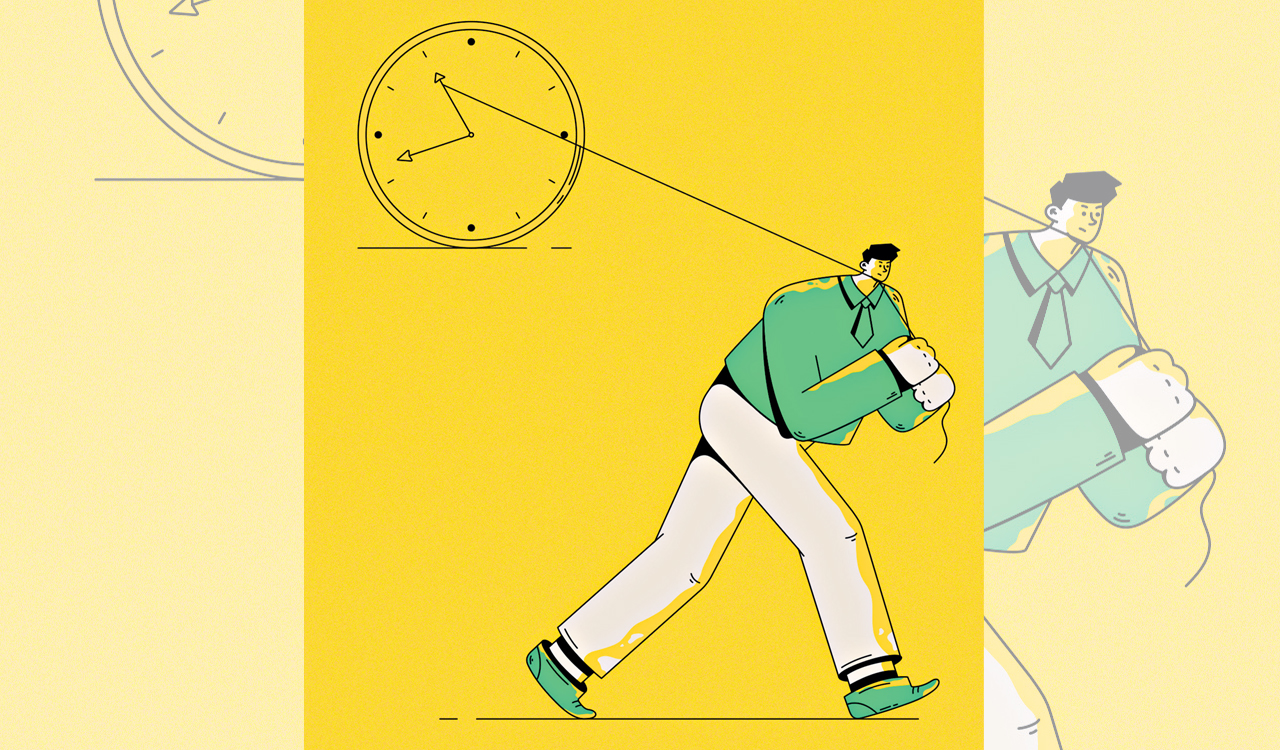Opinion: It’s Slow Time, Folks
We adhere closely to the adage ‘time is money’ – timespent waiting or slowly is deemed to be a loss of benefits

By Pramod K Nayar
That we inhabit a culture of speed is not a consciousness-bending discovery: from the speed of the internet connection to the (lack of) speed of judicial processes, the speed at which politicians change (loyalties), Lewis Hamilton’s greater speeds, etc. Even extinction and species loss is called ‘The Great Acceleration’. Reading, like business, in the title of Bill Gates’ book, is to be conducted @the speed of light. Speed has come to signify modernity. Indeed, the cult and culture of speed dominates us so much that books have to be condensed because people want to finish reading quickly.
The Long Now Foundation is building The Clock of the Long Now,a mechanical clock that will keep time for 10,000 years. It is funded by Jeff Bezos. (Of course, Amazon prides itself on speedy delivery.) Human pace and speeds are all connected to time, except that there are complications here.
GeologicalSpeeds
When JG Ballard asks in his climate-change novel, The Drowned World, ‘How are things in deep time?’, he is asking: do humans know what happens in deep time?
The melting of ice caps, the movements of glaciers, the formation of rocks are instances of a wholly different time scale. Landmasses that were once under the sea rose up. The shape of coastlines changes.Seas swallow land. Hills fold and are reshaped. Contrary to our commonsense understanding, terrain is not static but mobile. But such mobility takes aeons because geological processes are slow and completely unconnected to human speeds, or time scales.
Places like refugee camps are sites where time is spent with the hope of passage to safety, but this same hope diminishes with the passage of time
As Martin JS Rudwick, geologist and historian, who has done more to educate us on everything about deep time, from fossil records to earth sciences in works like Scenes from Deep Time, writes in his Earth’s Deep History: How it was Discovered and Why it Matters:
the vast expanses of pre-human deep time, even on their own, turned out to have been filled with a history just as eventful and dramatic in its own way as human history … that nature has had a history of its own.
Earth-time is prehuman time, but also non-human time, because it belongs to creatures that predate the humans. That is, a different pace of historical change is set by the earth.
Coined by John McPhee in the early 1980s, ‘deep time’ is the more commonly used term to describe geological time, a concept devised by the geologist James Hutton in the 18th century. The argument about deep time and geological time — althoughcommentatorsdispute that they are interchangeable — was that human history or human time is infinitesimal when compared to the time of the earth. The rate of movement of the earth’s strata takes millions of years. This is slow time parexcellence.
Prisoners ofTime
Waiting, as the anthropologist GhassanHage (2004) has argued, generates a different connection with agency and time, and, therefore, of the pace of life. When we are forced to wait in queues, for example, we have no agency: we cannot, on our own, set the pace. There are other processes in which we are forced to change pace. Protests,roadblocks, tech-failure slow us down even when we do not voluntarily slow our pace. And because we adhere closely to the adage ‘time is money’, time spent waiting or slowly is deemed to be a loss of benefits. Being made to wait is a classic mode of hierarchisation. When meeting our official superiors, we are kept waiting precisely to demonstrate that they are our bosses: your time is less important than the boss’. As Hage puts it:
There is a politics around who is to wait. There is a politics around what waiting entails. And there is a politics around how to wait and how to organise waiting into a social system. Waiting can, for example, define class and status relations in the very obvious sense of ‘who waits for whom’, which also means: who has the power to make their time appear more valuable than somebody else’s time?
The supplicant’s time is slowed down, as s/he waits for the person in power to appear (one recalls here Franz Kafka’s story, ‘Before the Law’, wherein a man waits for the door to open so that he can appeal to the law. The doorkeeper keeps him waiting for years, and the man dies, waiting for the door to open).
Prisons are places where time slows. More importantly, the unit of measurement, for example, of a life sentence, means time is measured immeasurably slowly — as such prisoners often say in films: ‘I have all the time in the world’. A whole new relationship with time emerges for the inmates because their time is regulated by others: the law enforcement authorities, the government.
Places like refugee camps are sites where time has slowed down as the inmates wait, interminably in many cases. Here time is spent with the hope of passage to safety, but this same hope diminishes with the passage of time.
Slowness to Music
In his In Praise of Slowness, Carl Honore writes:
the problem is that our love of speed, our obsession with doing more and more in less and less time, has gone too far; it has turned into an addiction, a kind of idolatry. Even when speed starts to backfire, we invoke the go-faster gospel. Falling behind at work? Get a quicker Internet connection. No time for that novel you got at Christmas? Learn to speed-read. Diet not working? Try liposuction. Too busy to cook? Buy a microwave. And yet some things cannot, should not, be sped up. They take time; they need slowness.
The musician extraordinaire John Cage wished to see how slowly a particular piece of composition could be performed. In 2013, at the chapel in the Sankt BurchardiChurch, Halberstadt, Germany, the 13th note change of Cage’s Organ2/ ASLSP was performed. The weights were taken off the pedals of the organ and the new chord was heard. The next note was heard in September 2020. The intention, as Cage made clear, was to play the piece as slow as possible and see how long the entire composition would take. Experts calculate that the final note of this piece will be played in 2640. JemFiner’sLongplayer, housed in London, is what is called an ‘infinite composition’. This composition is a set of programmed interaction of six short pieces. The composition will not repeat for 1,000 years.
This is the art of slowness.
Slowness, more and more experts tell us, especially after the pandemic, is crucial. Multitasking and running to stay in the same place should be shunned. Slow down, they say.
By the way, did you read this in 5 minutes? Or less?

(The author is Senior Professorof English and UNESCO Chair in Vulnerability Studies at the University of Hyderabad. He is also a Fellow of the Royal Historical Society and The English Association, UK)
Related News
-
Anantjeet, Darshna win mixed team gold at National Shooting
20 mins ago -
Atanu, Anandrao win individual titles for men and women in Senior National archery championship
24 mins ago -
Rakesh’s double ton propels St Mark’s to massive win at HCA Inter-schools
33 mins ago -
No electricity dues pending, says GITAM University Hyderabad
33 mins ago -
Sports briefs: Diya, Aabha win girls doubles sub-junior national badminton U-13 final
39 mins ago -
Gram panchayat polls pointer to growing public discontent against Congress, says BRS
42 mins ago -
AITUC alleges political interference in SCCL, warns of mass stir to protect Singareni
52 mins ago -
Former hockey coach Doraiswamy no more
56 mins ago




